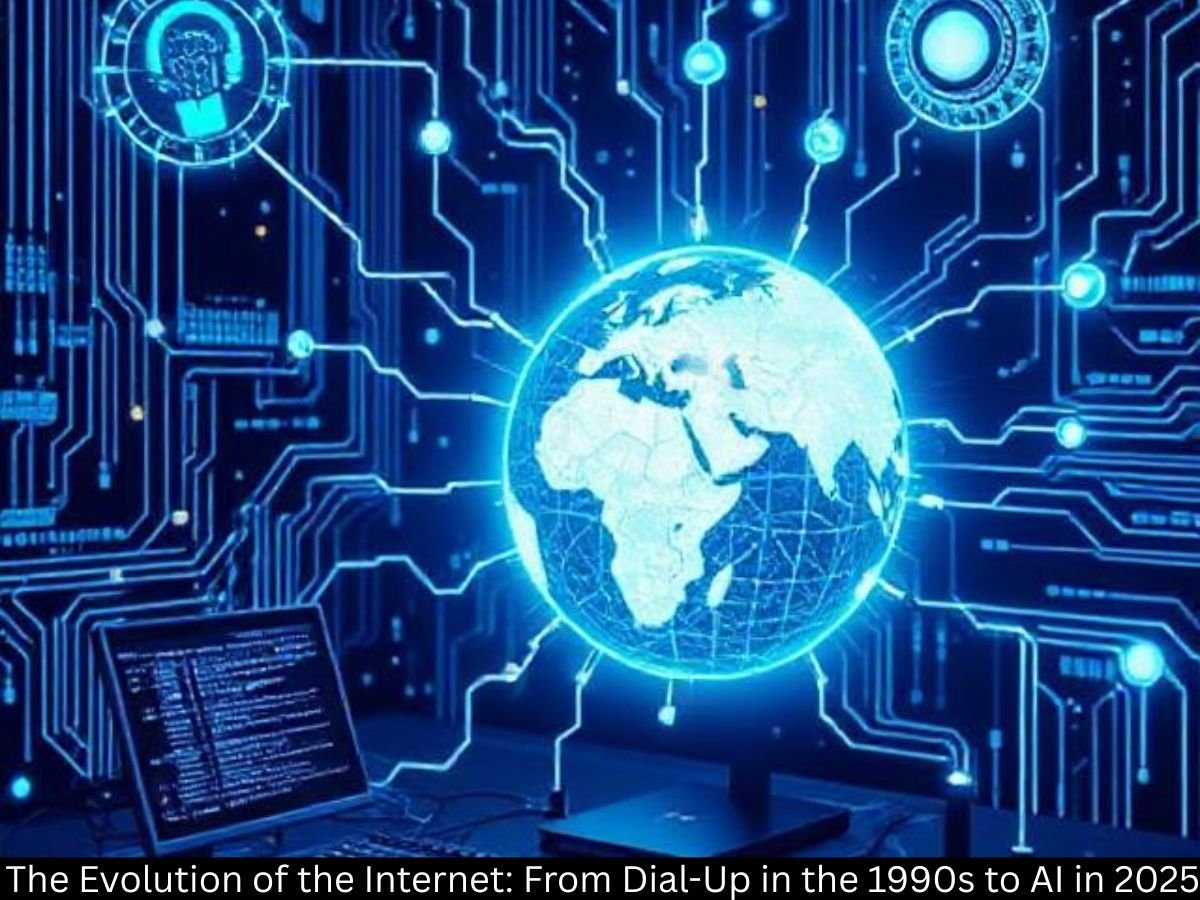The Internet is more than only one tool – this is the backbone of our modern world. From slow dial-up connections in the 1990s to Lightning-Fast 5G and AI-powered platforms in 2025, the Internet has changed our way of living, working and communicating. But how do we reach here, and what is next? Let’s take a trip through the development of the Internet by the 1990s.
What is internet evolution?
Internet evolution refers to the continuous development, change and innovation of the web since its birth. This includes technological upgradation, cultural changes and changes in society how society uses the Internet. Each decade brought new successes, giving shape to the Internet in global force which we know today.
Internet born before the 1990s
Prior to the 1990s, the Internet was primarily present as a research and military network. Known as Arpanet, it was designed for scientists and government use. Over time, it expanded to universities and gradually transfusted towards commercial use, which establishes the platform for the World Wide Web.
How did the Internet develop in the 1990s?
The 1990s were adolescents of the Internet. This was when it became the mainstream.
- Dial-up connection: Remember Screaching Modem Sound? The use of the Internet was slow and incredible, but it was groundbreaking.
- Rise of email and instant messaging: platforms like AOL and MSN Messenger added people in real time.
- Birth of search engines: Yahoo, Altavista, and later Google replaced how we got information.
- Dot-Com Boom: Thousands of companies raced online, making both innovation and financial bubbles.
2000s: broadband and expansion
In the early 2000s, the Internet became rapid, smooth and more accessible.
- Broadband replaces dial-up, which increases online activities.
- Social media platforms such as Facebook and Twitter defined communication again.
- E-commerce proceeded with veterans like Amazon and eBay.
2010S: Mobile Internet Revolution
The 2010s marked the shift in the smartphone from the desktop.
- Smartphone and mobile apps made the Internet portable.
- Cloud computing allowed users to store and access data anywhere.
- Streaming platforms such as Netflix and YouTube changed entertainment forever.
- The introduction of IOT is associated with everyday devices such as thermostats and watches on the web.
2020s: smart and connected era
Now, we are living in the era of ultra-connectivity.
- The 5G networks provide electricity-teej speed.
- Artificial Intelligence gave everything sacred from chatbot to smart homes.
- The virtual and the enhanced reality blur the line between the digital and the physical world.
- Cyber security challenges increase because they run more online of life.
What are the 4 stages of internet development?
- The Early Web (1990s)-Dial-up, static website and first online communities.
- Broadband and social media (2000s)-Internet from Teji, e-commerce rise, and global networking.
- Mobile-First Internet (2010) -Smartphone, Apps and on-the-go connectivity.
- Intelligent and Emarsiv Internet (2020s) – AI, VR, and a rapid immersive digital experience.
What are the four stages of development in technology?
Internet reflects the broad stages of technological development:
- Invention – Early ideas and construction.
- Development – comprehensive adoption and expansion.
- Maturity – stability, with the use of mainstream.
- Change – reinforcement and new frontiers.
How did the internet change communication
From the days of waiting for letters to sending quick messages worldwide, the Internet revolutionized communication. Social networking created virtual communities, while video calls brought face-to-face conversations in the digital age.
Internet role in business
The Internet did not change only social life – this business changed.
- E-commerce enabled global purchases on our fingers.
- Digital marketing allowed accurate targeting.
- Distance work became a reality, especially after 2020.
Internet cultural and social influence
Entertainment moved from television to streaming, and global communities were formed online. The Internet gave people a voice, associated cultures, and changed how we experience daily life.
What is the future of internet in 2025?
By 2025, the Internet is expected to be clever, faster and more immersive:
- The 6G exploration is already running, promising ultra-speed.
- AI- will create online experience according to the driven personalization.
- Metaverse expansion can use the virtual world to use mainstream.
- Decentralization and web 3.0 can give users more control over their data.
Future internet challenges
But the responsibility comes with progress:
- Concern of privacy as increased data collection.
- There is an increase in risk of cyber security with more associated devices.
- Digital divide risk leaves those people behind without access.
conclusion
The journey of the Internet from the 1990s to 2025 is the story of continuous innovation and change. From dial-up modem to immersive virtual realities, it has re-shaped our lives in an unthinkable way. And as we look forward, one thing is certain – the internet will continue to develop, it will continue to define how we connect, work, and live
questions to ask
How did the Internet develop in the 1990s?
It moved from a research tool to a mainstream network with dial-up access, email, instant messaging and early search engines.
What are the 4 stages of internet development?
Charan is the beginning web, broadband/social media, mobile-first and intelligent/immersive internet.
What is the future of internet in 2025?
By 2025, the Internet will feature AI-operated privatization, metavors growth, 6G-like sharp networks and more decentralized platforms.
What is internet evolution?
It is the continuous development of the Internet through technology, culture and use from Araptate to today’s intelligent network.
What are the four stages of development?
They are invention, development, maturity and changes – how the Internet has developed.
